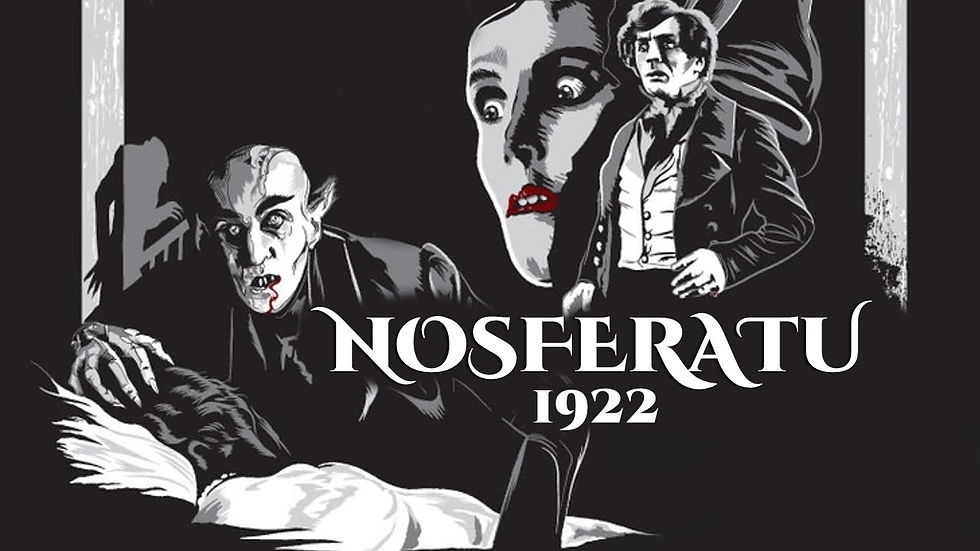Changing Genres: From Classic Monsters to Elevated Horror
- Roshin M. Varghese

- Jun 21, 2020
- 3 min read
If you’ve watched a handful of movies from different periods, a phenomenon you might have noticed is the changing of genres over time. Tastes change, standards rise, and tropes evolve.
Horror is one such genre that has undergone a particularly beautiful metamorphosis. What a long way we’ve come from the skeletons, cobwebs, and cauldrons of the late 1800s to the deeply complex, bone-chilling horror that somehow feels like it could also happen right in your neighbourhood.
The earliest horror films were primarily inspired by literary classics such as Dr Jekyll and Mr Hyde and Frankenstein. A great many films were inspired by Dracula, the most noteworthy of which still stands to be Nosferatu. These films gave way to a wave of monster movies that was predominant until the 1930s. Universal actually had a Classic Monsters franchise, the first known shared cinematic universe, long before the likes of the MCU.

In the 40s and 50s, the fear kindled by war seeped onto the screen. Many of the monsters in movies soon became less supernatural, and more the result of disasters and accidents at the hands of humans, such as Godzilla.
The 60s birthed the infamous slasher subgenre with Alfred Hitchcock’s Psycho. Slasher film hit its peak in the mid-70s to 80s, with The Texas Chain Saw Massacre being one of the most popular of its kind, and several others by Hitchcock defining the genre. The 70s and 80s were also brimming with the occult and the mysteries of the supernatural, most notably in The Exorcist, still touted as one of the greats.
The following few years were dominated by endless remakes and reprisals of the genres and tropes we know so well. Horror slowly lost its touch for storytelling, and began to rely solely on the fear factor, falling back on jump scares and heavy CGI to carry its weight.
However, in recent times, horror movies have witnessed a rediscovery of the kind of terror that stays with you long after you’ve watched the movie. Horror is truly powerful when you fear that what you see could happen to you. In an attempt to stay relevant to the times, the genre is being redefined yet again.
Robert Eggers draws fear from diving deep into the human mind and pushing its boundaries. His breakout film, The Witch, was a beautifully complex period piece and arguably one of the best slow-burn films out there. The Lighthouse is no conventional horror movie but chills you to the bone all the same. Eggers excels in creating an atmosphere that guarantees a descent into madness.

Jordan Peele’s foray into horror with Get Out and Us takes up the additional mantle of strong socio-political commentary, a definite sign of the times. The element of terror in his work stems from a chilling realization that the people around us are truly capable of heinous things. He works fear into his movies almost silently, but the context is so unnervingly profound that the weight of it is astounding.

Ari Aster has already made a name for himself in the genre with Midsommar and Hereditary. While his films certainly raise questions about his mental stability, they are real gifts to the new age of horror in all their unassuming glory. Aster creates harrowing worlds and delivers stunning visuals, all without compromising on the story.

The last few years have given way to a new trend of ‘elevated horror’, offering movies that are sophisticated, complex, and thematically rich. It is a style of film that doesn’t necessarily scare you in an obvious, outright way. In fact, the inability to fully comprehend why the genre is so goddamn terrifying is often the scariest thing about it.


















Comments